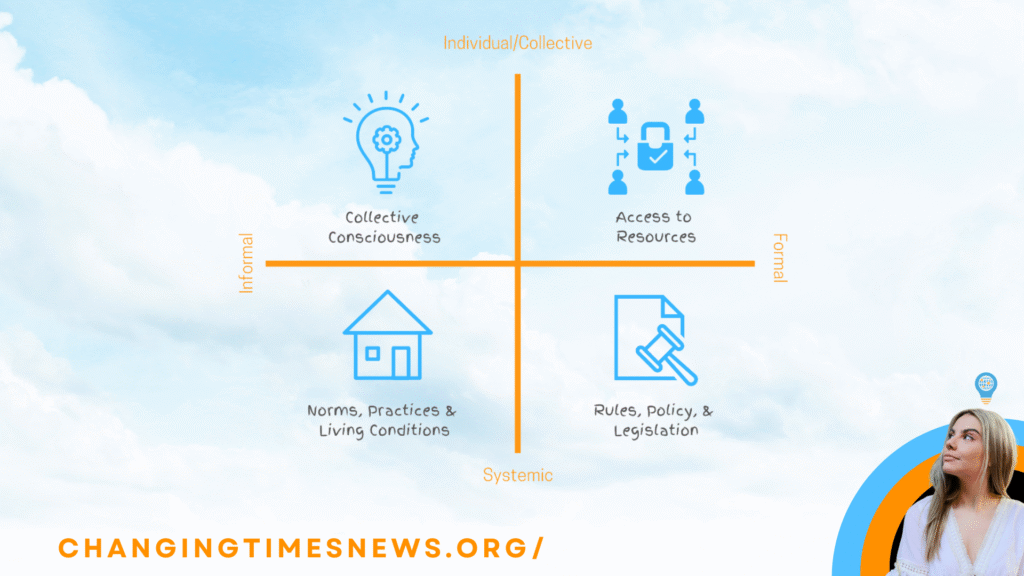In today’s political climate, the word justice is everywhere—splashed across campaign speeches, grassroots banners, and social media feeds. But what do we actually mean when we talk about justice? Is it about fairness in the courts, equality in schools, accountability in politics, or something broader still?
In the latest episode of Change Maker Q&A, host Tiyana J dives into this deceptively simple concept, breaking down the five major types of justice explored in philosophy and applied across society: distributive, procedural, retributive, restorative, and social justice.
This framework isn’t new—thinkers from Aristotle to John Rawls have debated what a “just society” looks like—but it’s increasingly urgent as Australia heads into a federal election where issues of fairness, accountability, and equity dominate the conversation.
1. Distributive Justice: Who Gets What—and Why
Distributive justice deals with how resources and opportunities are shared across society. From debates over Medicare funding to climate policy, this form of justice asks: Who gets what, and on what basis?
Philosopher John Rawls’ influential A Theory of Justice proposed that fair distribution should be imagined from behind a “veil of ignorance,” where no one knows their own social position—a thought experiment that continues to shape policy debates (Stanford Encyclopedia of Philosophy).
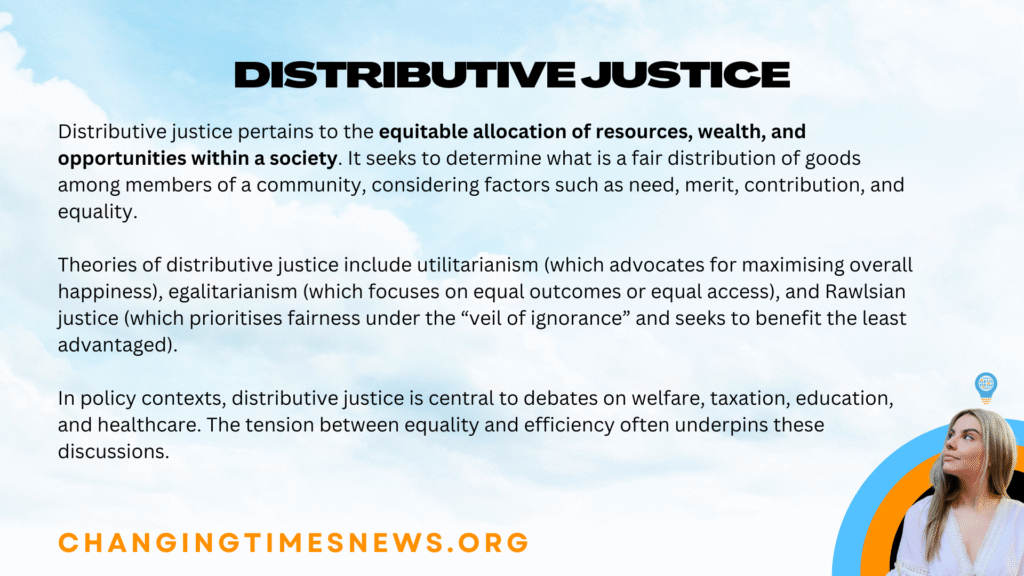
2. Procedural Justice: Fairness in the Process
If distributive justice is about outcomes, procedural justice is about how decisions are made. Are rules applied consistently? Do people have a voice in the process? Research by legal scholar Tom R. Tyler found that when individuals perceive processes as fair, they are more likely to accept even unfavorable outcomes (American Psychological Association).
In Australia, these principles are particularly relevant in policing and community engagement with Aboriginal and Torres Strait Islander peoples, where fairness in process is central to rebuilding trust.
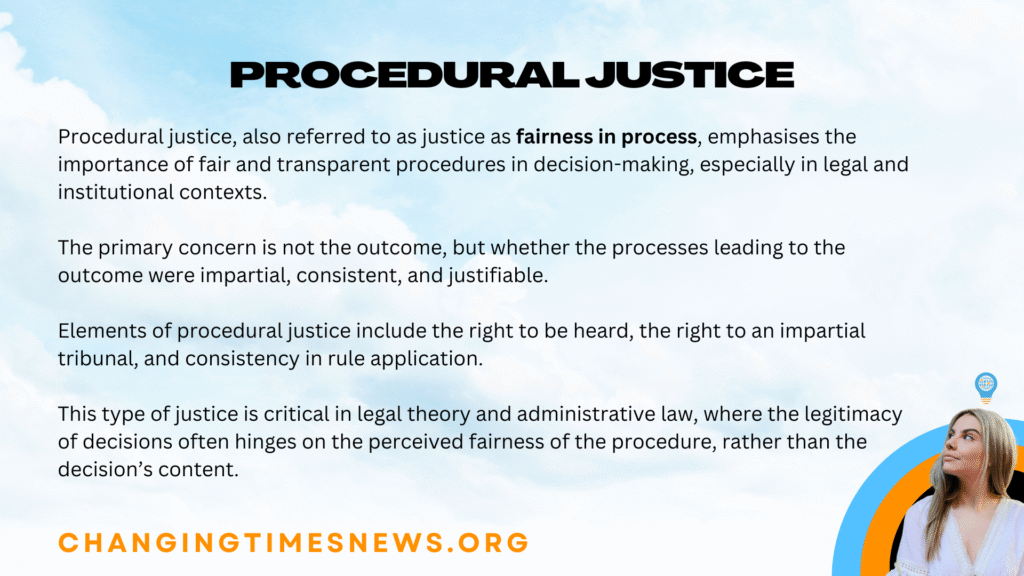
3. Retributive Justice: Punishment and Proportion
Retributive justice is the form most people associate with criminal law: the idea that wrongdoing deserves punishment proportional to the harm caused. While this model dominates traditional legal systems, critics warn that it risks prioritizing punishment over rehabilitation, particularly in debates about youth crime.
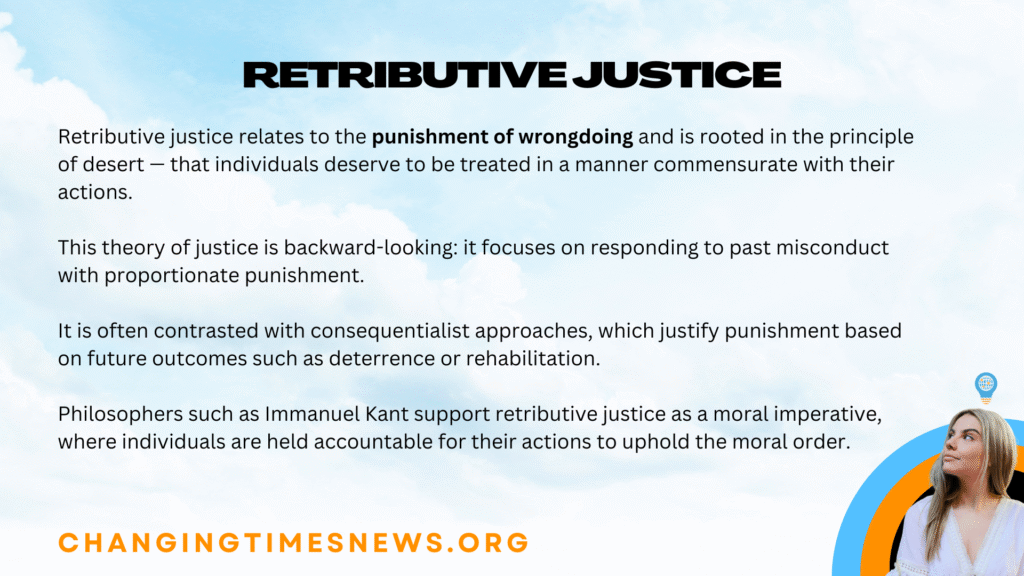
4. Restorative Justice: Repairing Harm
By contrast, restorative justice focuses not on punishment, but on healing. Rooted in Indigenous traditions and now widely used in schools, community programs, and post-conflict reconciliation, it asks: Who was harmed? What are their needs? How can we repair the damage?
South Africa’s Truth and Reconciliation Commission is perhaps the best-known example. In Australia, youth conferencing initiatives and Koori Courts are drawing on similar principles to foster accountability while keeping communities whole.
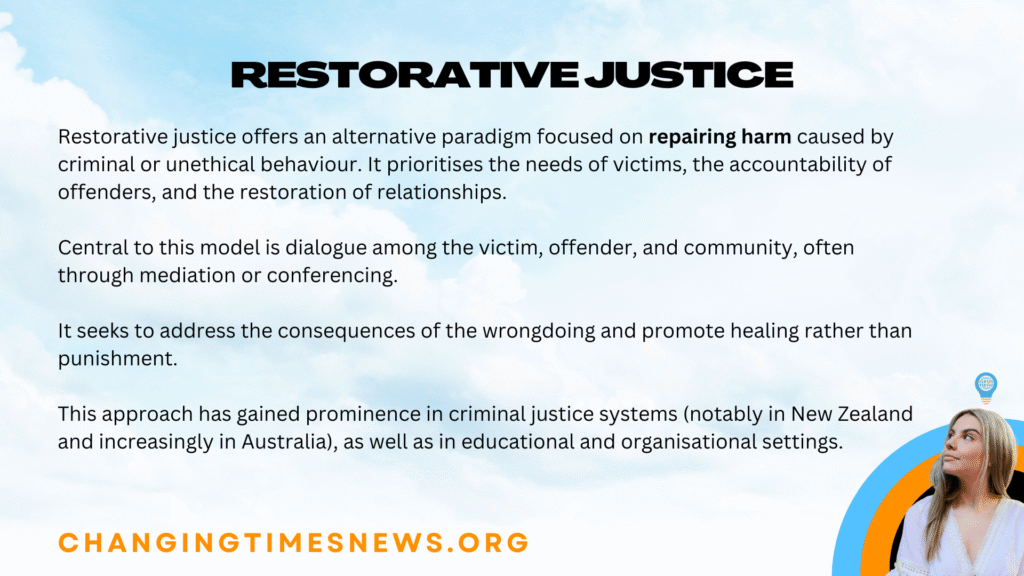
5. Social Justice: Equity and Collective Flourishing
Finally, the most widely recognized term today: social justice. Beyond slogans, it’s about dismantling systemic barriers to equity across race, gender, class, and identity.
From education reform to labor rights, social justice movements have been shaped by intersectional scholarship, which emphasizes how overlapping systems of oppression create unique forms of disadvantage (Crenshaw, 1989). In Australia, calls for treaty, truth-telling, and constitutional recognition of Aboriginal and Torres Strait Islander peoples highlight the living struggles at the heart of social justice.
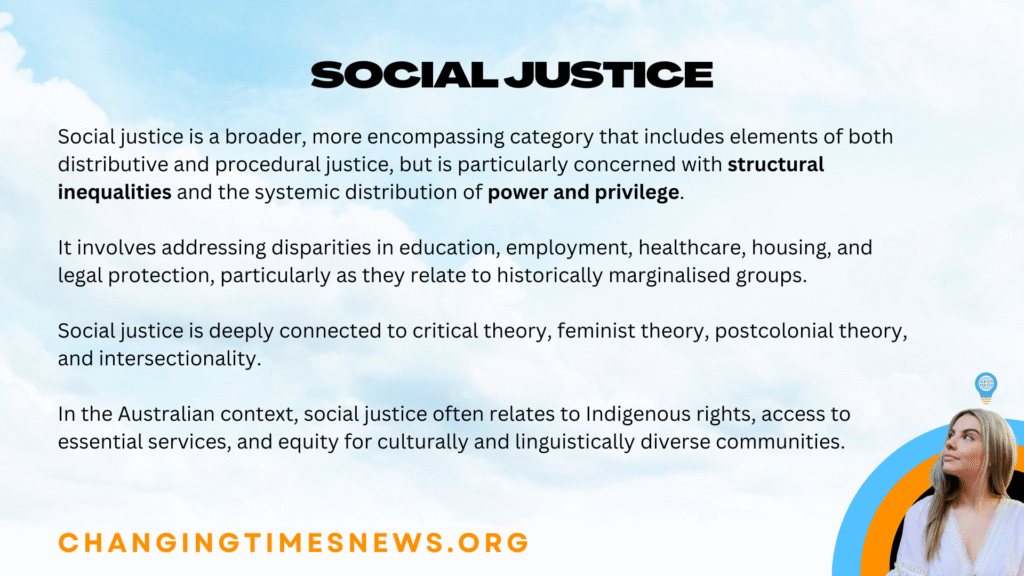
Why It Matters Now
For Tiyana J, understanding these five types of justice isn’t about choosing a favorite—it’s about recognizing the different ways justice operates in our lives and work. Whether you’re shaping policy, running a grassroots campaign, or simply reflecting on fairness in daily life, these frameworks offer tools to think more critically about what justice really means.


